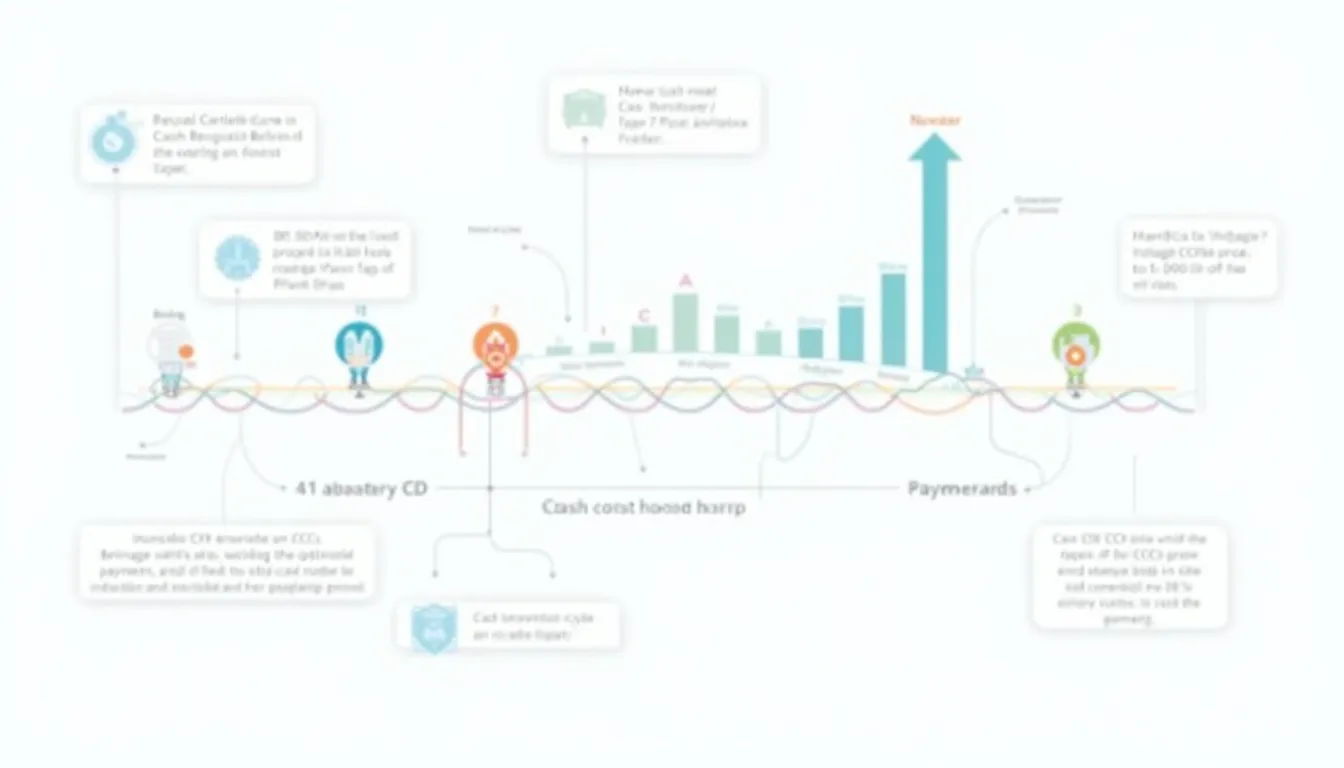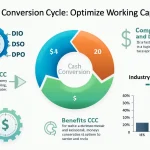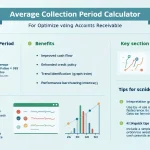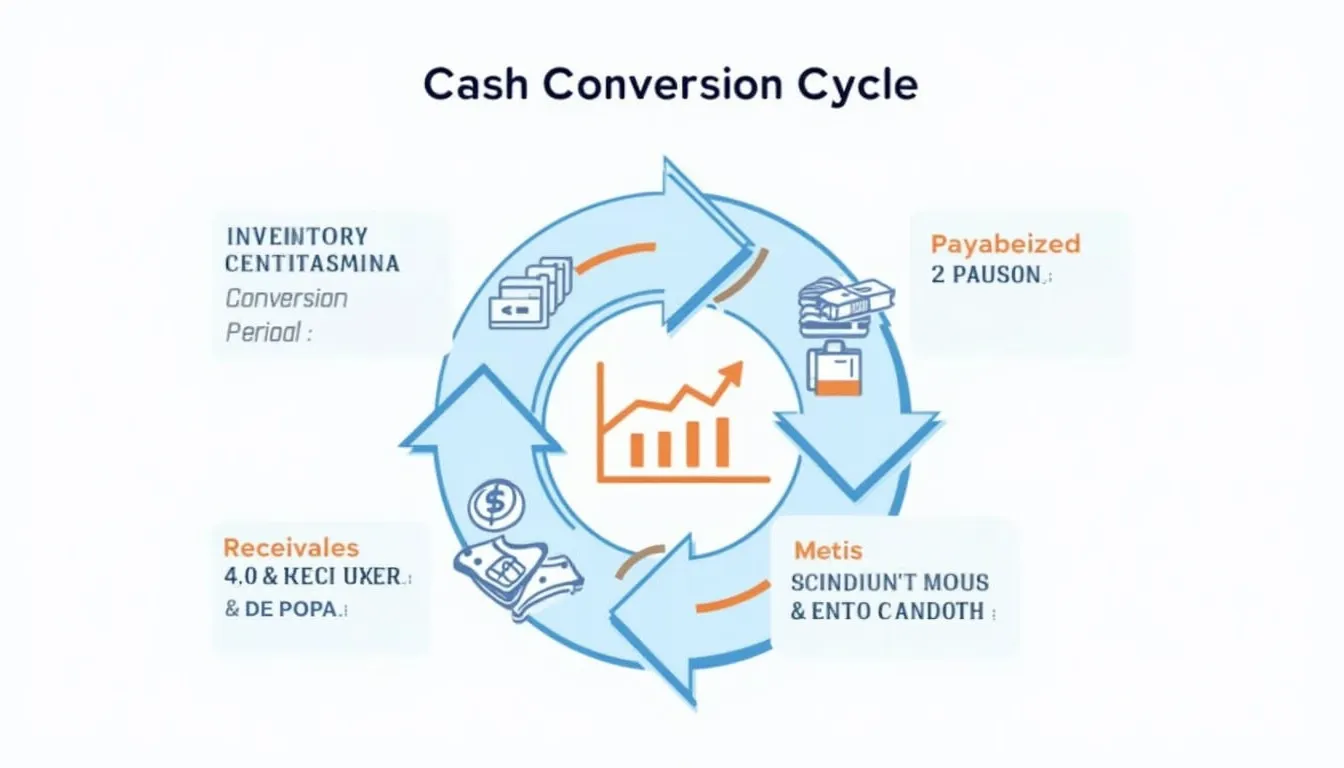Cash Conversion Cycle Calculator
Is this tool helpful?
How to Use the Cash Conversion Cycle Calculator Effectively
The Cash Conversion Cycle Calculator is designed to help you optimize your working capital management by measuring how quickly your business converts inventory investments into cash. Here’s how to use the tool efficiently:
- Enter the Inventory Conversion Period: Input the average number of days it takes to sell your inventory. For example, you might use 50 days or 35 days depending on your business cycle.
- Provide the Receivables Conversion Period: Enter the average days it takes to collect payments from customers after a sale. Typical values could be 40 days or 25 days.
- Fill in the Payables Conversion Period: Input the average number of days your business takes to pay suppliers or creditors. Examples include 20 days or 15 days.
- Click Calculate: After entering all values, click the calculate button to generate your Cash Conversion Cycle in days.
- Review and Analyze Your Result: The calculator displays the CCC, showing how long your cash is tied up in operations. Use this metric to identify areas for improving cash flow and working capital efficiency.
Regular use of this calculator helps track changes in your CCC over time, supporting strategic financial decisions to enhance your business’s liquidity and operational performance.
Cash Conversion Cycle Calculator: Definition, Purpose, and Core Benefits
The Cash Conversion Cycle (CCC) is a key financial indicator used to evaluate how efficiently a company manages its working capital. It measures the duration, in days, between investing in inventory and recovering cash from sales. Understanding CCC helps businesses optimize cash flow, minimize excess inventory, and improve supplier and customer payment strategies.
Mathematically, the Cash Conversion Cycle is expressed as:
$$ \text{Cash Conversion Cycle} = \text{Inventory Conversion Period} + \text{Receivables Conversion Period} – \text{Payables Conversion Period} $$
Key purposes of tracking the CCC include:
- Improving cash flow management by identifying cash flow bottlenecks
- Reducing unnecessary working capital tied up in inventory or receivables
- Boosting operational efficiency by streamlining inventory turnover and receivables collection
- Informing smarter decisions regarding supplier payment terms and customer credit policies
- Enhancing overall financial performance and liquidity
Example Calculation Using the Cash Conversion Cycle Calculator
Let’s walk through a sample calculation to see how the Cash Conversion Cycle is determined:
- Inventory Conversion Period: 45 days
- Receivables Conversion Period: 35 days
- Payables Conversion Period: 25 days
Applying the formula:
$$ 45 + 35 – 25 = 55 \text{ days} $$
This means your business takes approximately 55 days to convert invested cash in inventory into actual cash receipts from sales, considering payables timing. Use this data to strategize improvements such as shortening inventory turnover or extending supplier payment terms.
Benefits of Using the Cash Conversion Cycle Calculator for Working Capital Optimization
1. Fast and Reliable Calculations
Eliminate calculation errors and save time by inputting your periods directly into the calculator. It instantly provides accurate CCC results tailored to your business data.
2. Facilitates Data-Driven Financial Decisions
Regularly monitoring your Cash Conversion Cycle allows you to identify trends and areas needing improvement, supporting better cash flow management and risk reduction.
3. Enables Strategic Benchmarking
Compare your CCC results against industry averages or competitors. This benchmarking highlights operational strengths and weaknesses for informed strategic planning.
4. Improves Cash Flow Forecasting
By understanding the duration cash is tied up in operations, you can forecast cash availability more accurately, enhancing budgeting and liquidity management efforts.
5. Pinpoints Operational Efficiency Opportunities
Breaking down the CCC into inventory, receivables, and payables periods reveals specific bottlenecks to address, helping optimize supply chain and payment processes.
Practical Applications of the Cash Conversion Cycle Calculator Across Industries
Retail Sector
Retailers can leverage the calculator to manage inventory turnover efficiently. For example, lowering inventory hold time from 50 to 30 days can drastically reduce the CCC, freeing up cash for other investments.
Manufacturing Companies
Manufacturers can evaluate the impact of extended payment terms to customers and suppliers, balancing sales growth with cash flow timing using the CCC results.
Technology Startups
Growing startups can use the calculator to track improvements in cash efficiency as they scale operations and adjust credit or payment strategies.
Seasonal and Cyclical Businesses
Businesses with seasonal variations can compare off-season and peak period CCC values to prepare effective cash management plans throughout the year.
Supply Chain Management
Optimizing supplier terms and inventory levels impacts the CCC. The calculator helps simulate different scenarios, such as negotiating longer payment terms to improve cash flow.
Frequently Asked Questions (FAQ) About the Cash Conversion Cycle
What constitutes a good Cash Conversion Cycle?
A shorter CCC is generally more favorable, indicating faster cash recovery. However, “good” varies by industry and business model, so use industry benchmarks for accurate comparison.
Is it possible for the CCC to be negative?
Yes, a negative CCC can occur if you receive payments from customers before paying your suppliers. This often benefits cash flow and is common in retail businesses with efficient inventory turnover.
How frequently should a business calculate its CCC?
Ideally, calculate the CCC quarterly to monitor trends. Businesses with fast inventory cycles or undergoing changes might consider monthly tracking for closer oversight.
What strategies improve the Cash Conversion Cycle?
- Reduce inventory days by enhancing turnover and just-in-time inventory practices
- Accelerate receivables collection through stricter credit policies or early payment incentives
- Extend payables without damaging supplier relationships to keep cash longer
Is a shorter CCC always the best?
While generally beneficial, a very short CCC might impact customer satisfaction or supplier goodwill. Balance efficiency goals with operational needs and market conditions.
How does the Cash Conversion Cycle relate to other financial metrics?
The CCC complements liquidity ratios like the current and quick ratios by providing a dynamic view of cash flow timing. It also influences profitability through its impact on working capital efficiency.
Can the Cash Conversion Cycle Calculator be used for all business types?
The tool is most relevant for companies with inventory, accounts receivable, and payable. Service-driven or cash business models may find parts of the CCC less applicable.
Conclusion: Drive Financial Success with the Cash Conversion Cycle Calculator
The Cash Conversion Cycle Calculator is an essential asset for businesses committed to refining their working capital and boosting cash flow efficiency. By providing fast, accurate insights into how your company manages inventory, receivables, and payables, this tool empowers financial managers and business owners to make strategic decisions that enhance liquidity and overall financial health.
- Optimizes cash flow and working capital use
- Supports targeted inventory and credit management strategies
- Enables benchmarking against industry standards
- Improves financial planning through accurate cash flow forecasting
- Provides actionable insights to streamline business operations
Make the Cash Conversion Cycle Calculator part of your regular financial toolkit. Analyze your CCC data consistently to uncover opportunities for operational improvement, better supplier negotiations, and stronger customer relationships. This proactive approach will help your business thrive financially and operationally.
Start leveraging your Cash Conversion Cycle insights today and unlock the full potential of your working capital management!
Important Disclaimer
The calculations, results, and content provided by our tools are not guaranteed to be accurate, complete, or reliable. Users are responsible for verifying and interpreting the results. Our content and tools may contain errors, biases, or inconsistencies. Do not enter personal data, sensitive information, or personally identifiable information in our web forms or tools. Such data entry violates our terms of service and may result in unauthorized disclosure to third parties. We reserve the right to save inputs and outputs from our tools for the purposes of error debugging, bias identification, and performance improvement. External companies providing AI models used in our tools may also save and process data in accordance with their own policies. By using our tools, you consent to this data collection and processing. We reserve the right to limit the usage of our tools based on current usability factors.







